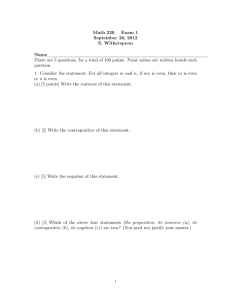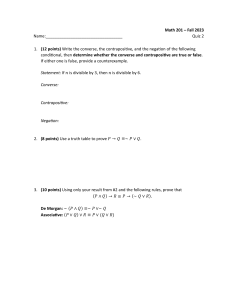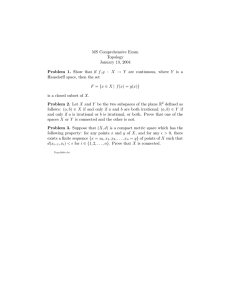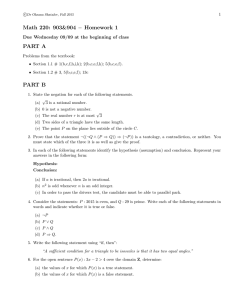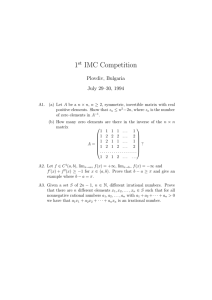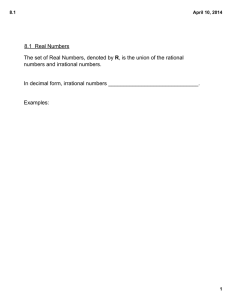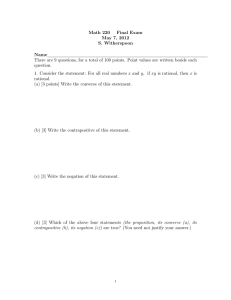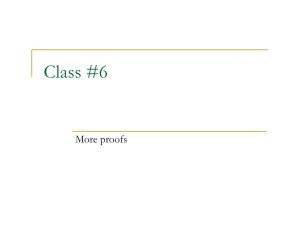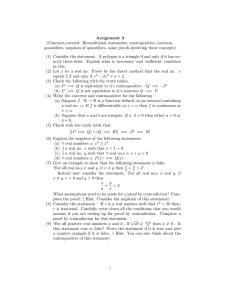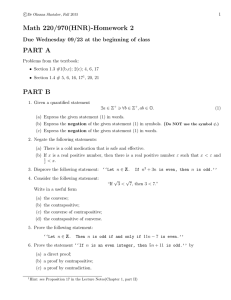M220 Practice Exam I
advertisement
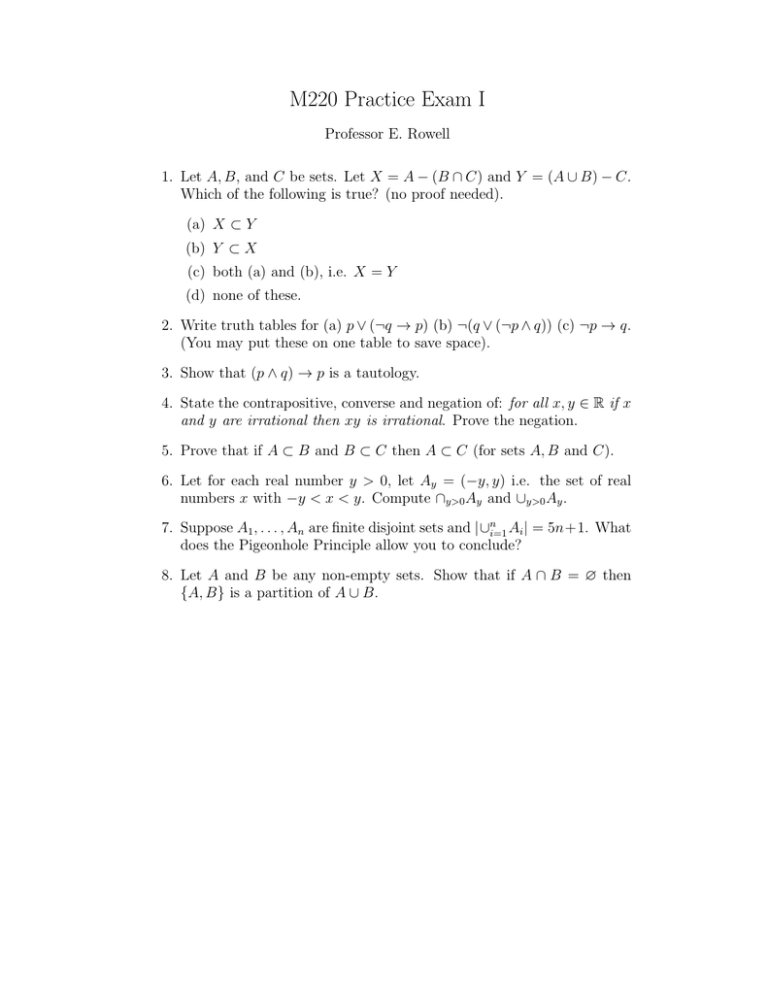
M220 Practice Exam I
Professor E. Rowell
1. Let A, B, and C be sets. Let X = A − (B ∩ C) and Y = (A ∪ B) − C.
Which of the following is true? (no proof needed).
(a) X ⊂ Y
(b) Y ⊂ X
(c) both (a) and (b), i.e. X = Y
(d) none of these.
2. Write truth tables for (a) p ∨ (¬q → p) (b) ¬(q ∨ (¬p ∧ q)) (c) ¬p → q.
(You may put these on one table to save space).
3. Show that (p ∧ q) → p is a tautology.
4. State the contrapositive, converse and negation of: for all x, y ∈ R if x
and y are irrational then xy is irrational. Prove the negation.
5. Prove that if A ⊂ B and B ⊂ C then A ⊂ C (for sets A, B and C).
6. Let for each real number y > 0, let Ay = (−y, y) i.e. the set of real
numbers x with −y < x < y. Compute ∩y>0 Ay and ∪y>0 Ay .
7. Suppose A1 , . . . , An are finite disjoint sets and |∪ni=1 Ai | = 5n+1. What
does the Pigeonhole Principle allow you to conclude?
8. Let A and B be any non-empty sets. Show that if A ∩ B = ∅ then
{A, B} is a partition of A ∪ B.
